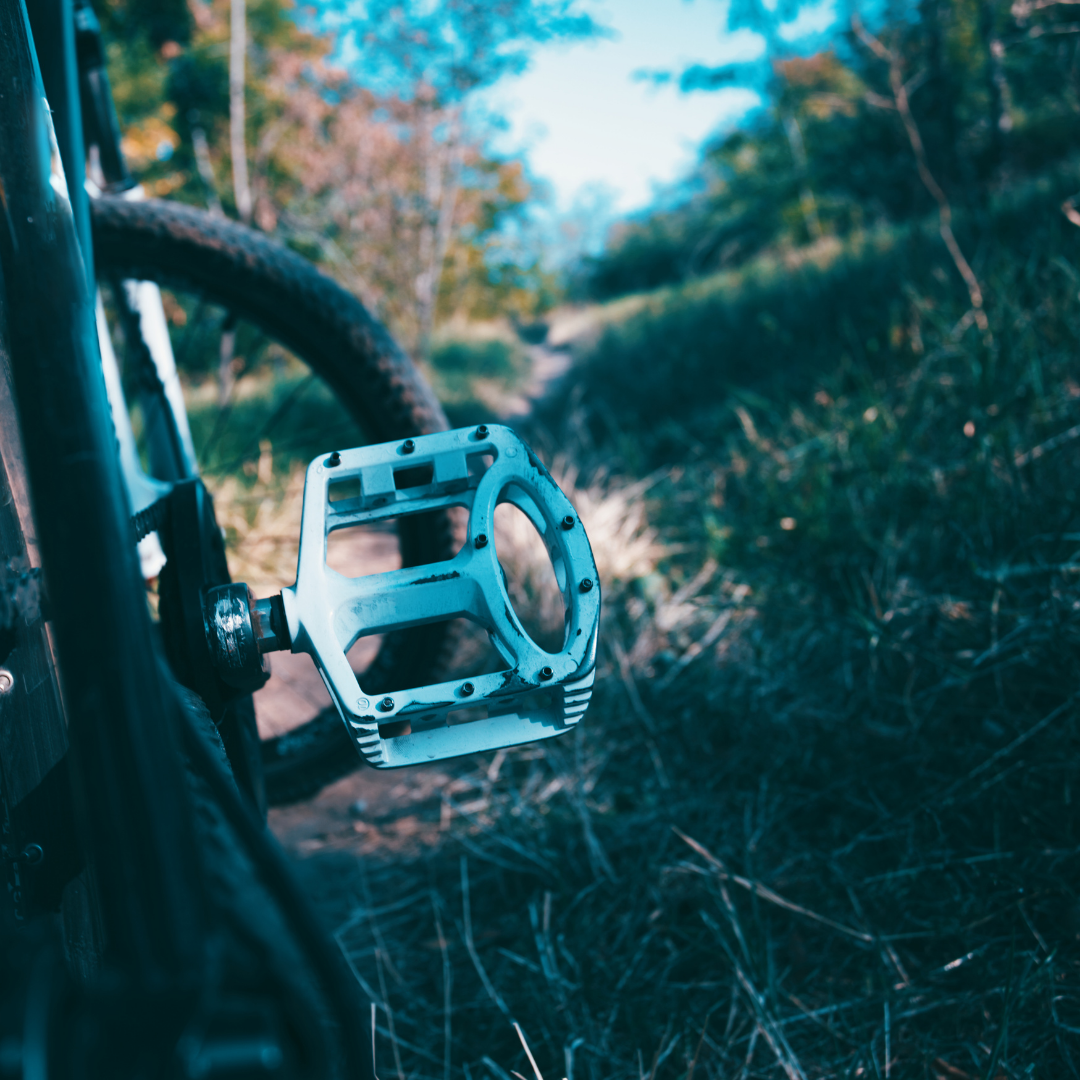Team Shredders Tips: Which Pedals Are Right for YOU?
Coach Dustin has the scoop on how to pick the right pedals for your mountain bike!
Check out these well-loved platform pedals!
Ask any experienced cyclist this question and you’ll certainly get their opinion: stories of slow motion crashes, bear-trapped shins and/or a 3hr long dissertation on why one pedal is better than the other.
My goal in the next few paragraphs is to present some useful facts regarding different options for pedals so you can choose what fits your scenario best.
There are 2 types of pedals commonly used for mountain biking; platform (generally referred to as “flats”) and clipless (denoting the absence of a strap/basket used on the less common toe clip style pedal).
Platform Pedals
Flats are the most universally common pedal. It’s what we all learned on, the design is simple and they don’t require special shoes in order to use them. When mountain biking, flats offer riders the ability to easily change position on the pedal, bail off the bike and they offer a larger, stable platform to stand on. Both sides of a flat pedal are usually identical, making it easy to get your foot in position and start pedaling.
As you become more advanced you will want better engagement on the pedal and can buy more aggressive platforms with pins that will help your shoe grip the surface pedal. There are flat pedal specific shoes with sticky rubber soles and tread that helps your foot stay planted on the pedal. Flat pedals also shed mud well and don’t require a ton of maintenance.
Toe Clips
This option is less commonly seen on mountain bikes these days. While they do allow some extra control and efficiency by creating a “basket” for your toe to slip in, they also only have one side of engagement and tend to be a bit clumsy to get into. These are great for commuting and compatible with any shoe that will fit in them.
Clipless Pedals
“BUT YOU CLIP INTO THEM! WHY ARE THEY CALLED CLIPLESS!?”
“Clipless” simply refers to the fact that you don’t rely on a toe clip to keep your foot on this pedal. These pedals allow you to stay firmly connected to the pedal via a cleat that is bolted to a clipless specific shoe and then attaches to one of several types of clipless pedals. This is a “step in” and simple “twist out” type of technology reliant on spring tension. This concept is reminiscent of a ski boot and binding.
Some popular brands available are Shimano (and other SPD compatible pedals), Crankbrothers and TIME. Although you are firmly attached to the pedal with all of these brands, each allows different amounts of float (lateral movement) and mud shedding ability.
A clipless pedal gives riders the most universal control of their bike and most pedaling efficiency. When your foot is attached or clipped into your pedal you can rest the weight of your body into your feet without the concern of slipping off the pedals while riding (which can be extremely dangerous). You can also pedal with more fluidity and efficiency (pedal circles) by pushing and pulling throughout your pedal stroke therefore applying force throughout the entire cycle (not just pushing).
Clipless compatible shoes can also have much stiffer soles to make up for the lack of surface area on the actual clipless pedal. A stiffer sole is advantageous by providing a more efficient transfer of power from your foot to the pedal.
Now that you’ve had a crash course (pun?) in mountain bike pedals you can make a pedal selection with a little more confidence and find the perfect match for your riding style :)
Here are a few links to the pedals described above:
https://www.sram.com/en/time-sport/models/pd-xc-2-a1

